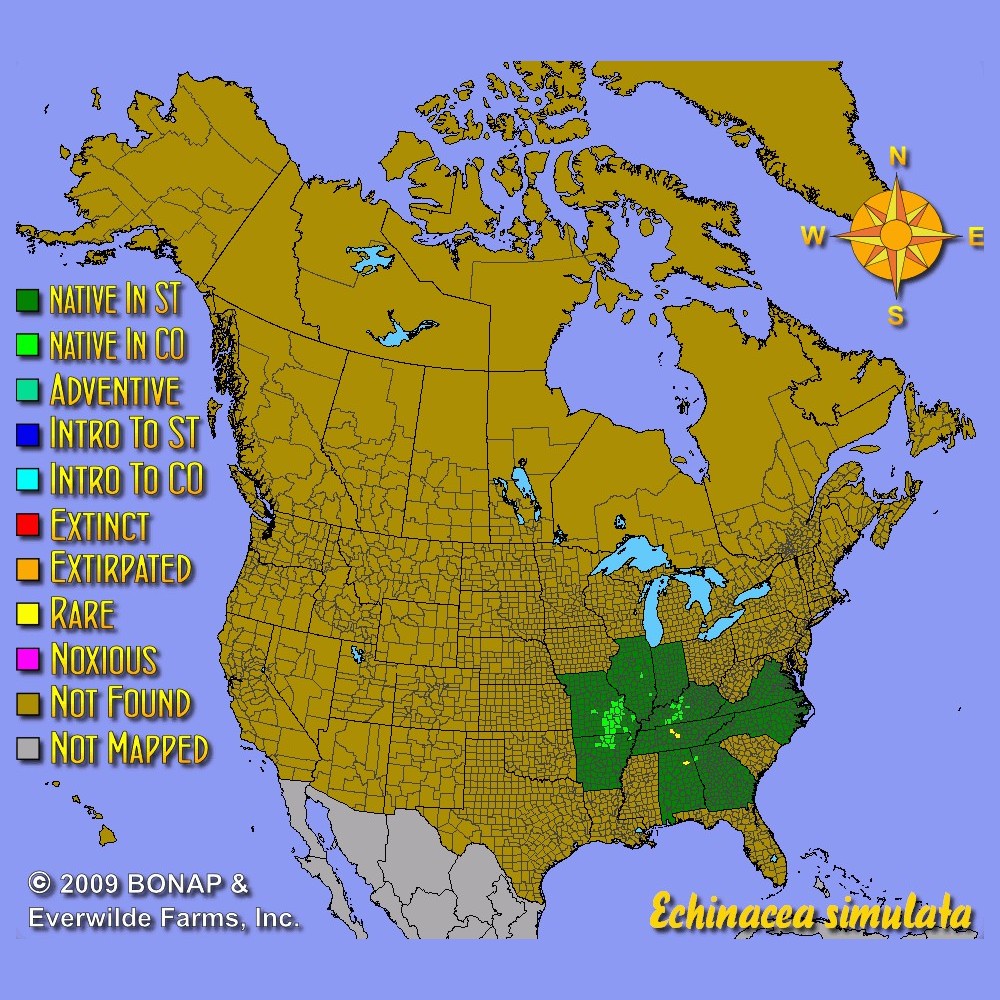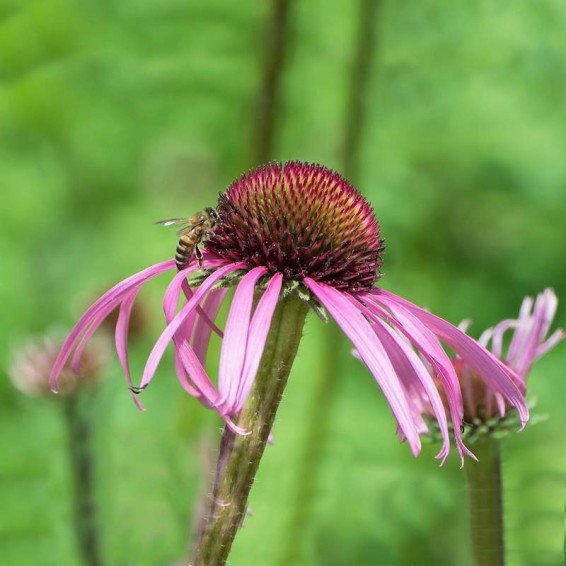Wavy Leaf Purple Coneflower Seeds
Echinacea simulata
- HOW TO GROW
- FAST FACTS
HOW TO GROW
Sowing: Direct sow in late fall, planting the seeds 1/4" deep and lightly compacting the soil. For spring planting, mix the seed with moist sand and store it in the refrigerator for 90 days before direct sowing; keep the soil consistently moist until germination. Thin or transplant the seedlings.
Growing: Water seedlings until they become established. Mature plants tolerate drought well, and need well-drained soil for healthy growth. Keep competition to a minimum in the first year of growth, since this plant cannot reach its full potential when crowded by weeds. Deadheading will greatly increase blooming. After several years of growth, mature plants can be divided in late fall. This plant attracts birds, butterflies and bees as well as resisting deer.
Harvesting: For fresh flowers, cut long stems of flowers that have just opened and place them in water immediately; strip the leaves that will fall below the water.
Seed Saving: After flowering, the central cones of the flowers will develop into a spiky seed head. Since songbirds such as goldfinches love to eat these seeds, they should be harvested as soon as possible to avoid loss. As soon as the seeds easily come loose from the head, cut off the seed heads. Rub them lightly to remove the seed, and store the seed in a cool, dry place.
FAST FACTS
Common Names: Pale Purple Coneflower, Glade Coneflower
Latin Name: Echinacea simulata
Species Origin: US Native Wildflower
Type: Native Wildflowers
Life Cycle: Perennial
USDA Zones: 4, 5, 6, 7
US Regions: Midwest, Southeast
Seeds per Ounce: 8,700
Stratification: Cold/Wet for 8 Weeks
Germination Ease: Stratify 8 Weeks
Sunlight: Full Sun
Height: 30 Inches
Color: Pink
Bloom Season: Blooms Early Summer
Uses: Attracts Pollinators, Attracts Honeybees, Attracts Butterflies, Hummingbirds, Cut Flowers, Deer Resistant
DESCRIPTION

HOW TO GROW
Sowing: Direct sow in late fall, planting the seeds 1/4" deep and lightly compacting the soil. For spring planting, mix the seed with moist sand and store it in the refrigerator for 90 days before direct sowing; keep the soil consistently moist until germination. Thin or transplant the seedlings.
Growing: Water seedlings until they become established. Mature plants tolerate drought well, and need well-drained soil for healthy growth. Keep competition to a minimum in the first year of growth, since this plant cannot reach its full potential when crowded by weeds. Deadheading will greatly increase blooming. After several years of growth, mature plants can be divided in late fall. This plant attracts birds, butterflies and bees as well as resisting deer.
Harvesting: For fresh flowers, cut long stems of flowers that have just opened and place them in water immediately; strip the leaves that will fall below the water.
Seed Saving: After flowering, the central cones of the flowers will develop into a spiky seed head. Since songbirds such as goldfinches love to eat these seeds, they should be harvested as soon as possible to avoid loss. As soon as the seeds easily come loose from the head, cut off the seed heads. Rub them lightly to remove the seed, and store the seed in a cool, dry place.
FAST FACTS
Common Names: Pale Purple Coneflower, Glade Coneflower
Latin Name: Echinacea simulata
Species Origin: US Native Wildflower
Type: Native Wildflowers
Life Cycle: Perennial
USDA Zones: 4, 5, 6, 7
US Regions: Midwest, Southeast
Seeds per Ounce: 8,700
Stratification: Cold/Wet for 8 Weeks
Germination Ease: Stratify 8 Weeks
Sunlight: Full Sun
Height: 30 Inches
Color: Pink
Bloom Season: Blooms Early Summer
Uses: Attracts Pollinators, Attracts Honeybees, Attracts Butterflies, Hummingbirds, Cut Flowers, Deer Resistant



